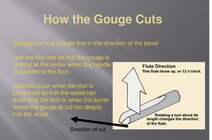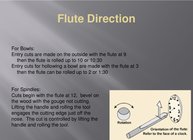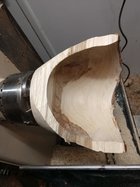Just starting out and my memory isn't what it used to be and I'm sure the answer might be each is different, but.
I was thinking of making myself some printed out helper pages to hang on the wall behind my lathe.
Ones describing the safest way to do things like cutting above the center line with certain tools and below with other tools. How working inside a bowl differs the center line from the outside.
Things you should never do with a bowl gouge or spindle, skew etc..
Now I find myself switching tools like to a scraper on the inside and have to think, "was that handle up or down on the center line?"
Correct orientation for the flute starting a cut and so forth.
Is there someplace these are listed already or can we write some down here to get me started?
Seems like you tube has some differences which is fine but I would like to have something right in front of me to look at instead of running upstairs to the computer and looking on youtube plus that gets distracting!
I'd like to train myself in the correct way of doing things before I get experience and complacent about stuff.
Thanks
I was thinking of making myself some printed out helper pages to hang on the wall behind my lathe.
Ones describing the safest way to do things like cutting above the center line with certain tools and below with other tools. How working inside a bowl differs the center line from the outside.
Things you should never do with a bowl gouge or spindle, skew etc..
Now I find myself switching tools like to a scraper on the inside and have to think, "was that handle up or down on the center line?"
Correct orientation for the flute starting a cut and so forth.
Is there someplace these are listed already or can we write some down here to get me started?
Seems like you tube has some differences which is fine but I would like to have something right in front of me to look at instead of running upstairs to the computer and looking on youtube plus that gets distracting!
I'd like to train myself in the correct way of doing things before I get experience and complacent about stuff.
Thanks



